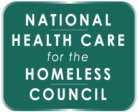Mortality and Homelessness Fact Sheet
The collection and use of homeless mortality data gives the public health community a better understanding of the “who, what, where, why, and how” people are dying while unhoused. It also identifies high-need areas and demographic disparities, informs funding and policy priorities, and allows public health authorities to respond more quickly with evidence-based interventions. Finally, […]
Mortality and Homelessness Fact Sheet Read More >>




